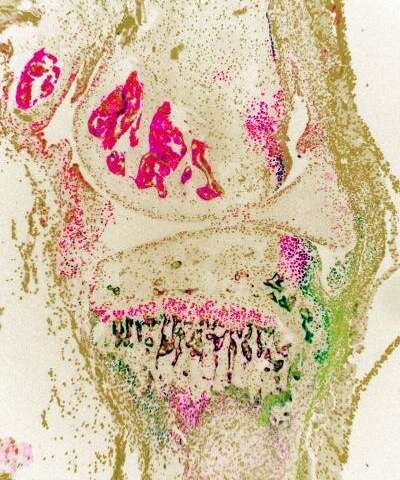
The same stem cells that heal broken bones can also generate arthritic bone spurs called osteophytes, according to a new study in the Annals of the Rheumatic Diseases.
“Although these stem and progenitor cells promote healthy bone repair in other contexts, they are inappropriately activated to cause a pathological bony protuberance in the context of arthritis,” said Gage Crump, a professor of stem cell biology and regenerative medicine at USC. Crump is the paper’s co-corresponding author, along with Cosimo de Bari from the University of Aberdeen in the UK.
Led by Crump and de Bari, an international team of scientists made this discovery by studying mice that had sustained a type of knee injury that causes arthritis. In these mice, a different colored fluorescent protein labeled each of eight distinct cell populations. This allowed the scientists to view the fluorescent labels under a microscope and trace how the various cell populations contribute to the formation of arthritic bone spurs.
The major culprit turned out to be a type of stem cell with activity in a gene called Sox9, which is also involved in bone repair. At the edge of the arthritic joint, these cells contributed to cartilage outgrowths that later turned into pathological bone spurs. These cartilage outgrowths had many of the distinctive hallmarks of the cartilage seen during bone regeneration, suggesting further parallels between pathological bone spur formation and normal bone repair.
Source: Read Full Article






